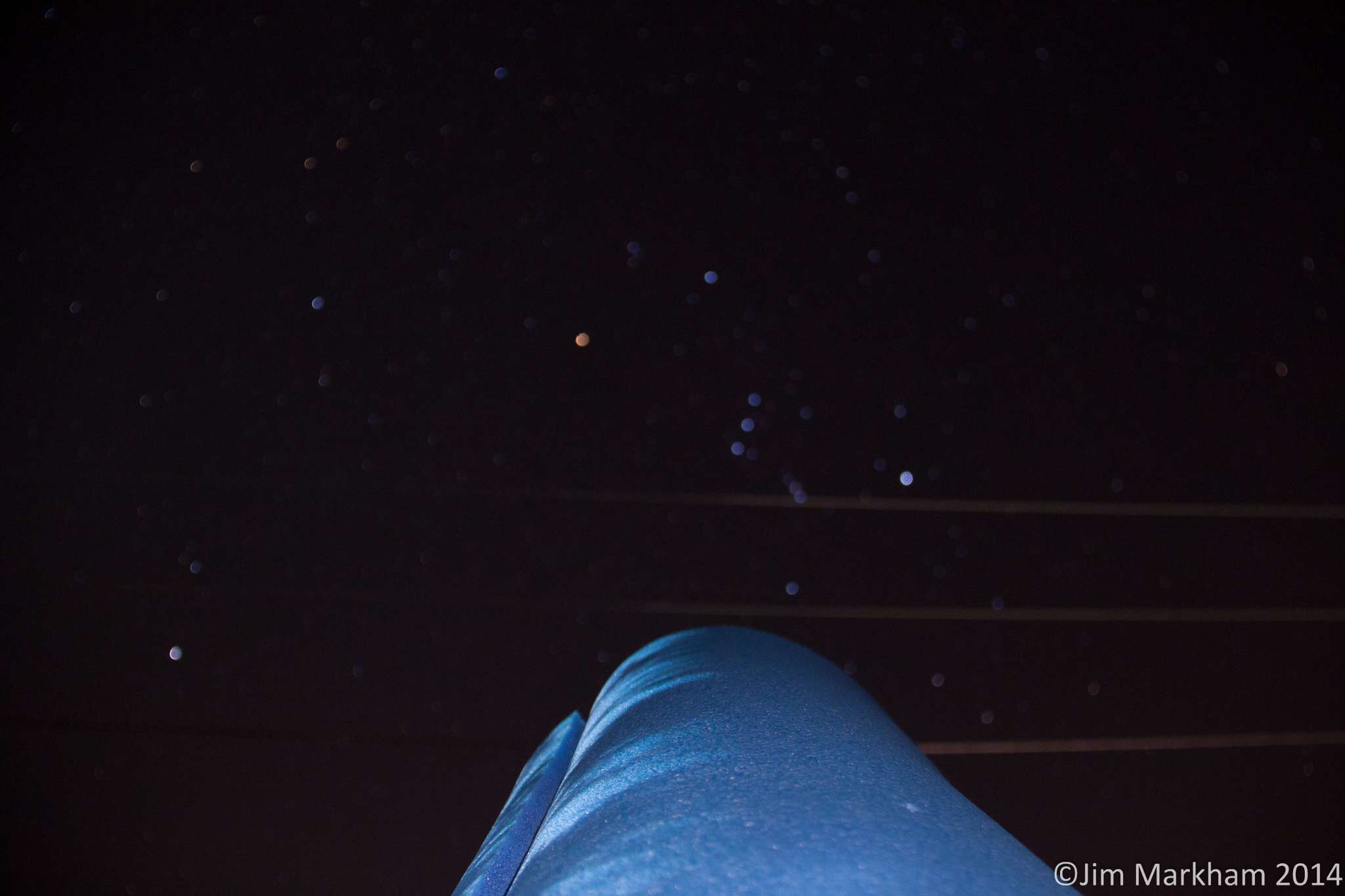
All of the telescope prep paid off. While I did not get to try shooting the GoPro through the lens for video frame stacking, I was able to get to pretty much everything else on the list. I know I didn’t get any shots of the setup, but hopefully my brother’s pictures will be up on facebook soon enough, and I can thief one of them to show that setup off here. The first night I did some basic video of the moon so I could stack the images in Registax and see what I could come up with. While photoshop didn’t want to auto-align all of the resulting images, I managed to get most of them together and here’s what I ended up with:
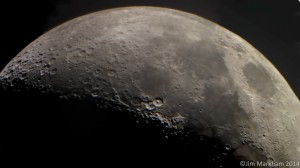
It isn’t the sharpest up top (I apparently kept bumping the scope when I was talking about the setup while that bit was shooting, and I forgot to re-shoot the vid.
I also did all of the through-the-scope imaging of the M42/M43 combo on the first night, but I’ll hold off on that until the end of the next sequence of pics. On night two, I tried some eyepiece-adapter shots with the Canon for starters, but was having a problem getting anything to show up on the sensor. Not sure exactly what was going on, but I was able to get the piggy-back shots working pretty well. Since they were at least ALT-AZ mount tracking the stars, trailing for the ~20 second exposures I was doing all turned out without star trailing issues.
First, at 18MM:
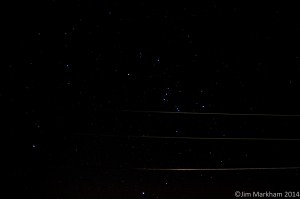
(Canon EF-S 18-200mm f/3.5-5.6. Shot at 18mm, f/3.5, ISO 800, 15-sec shutter)
Then 50mm:
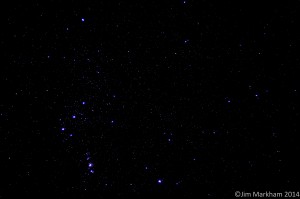
(Canon EF 50mm f/1.4. 10 15-sec exposures shot at f/1.8, ISO 400.)
Since my brother brought his 85mm f/1.8 (which a lower focal ratio, but more available glass than the 50mm, even considering the lower ratio), here’s 85mm:
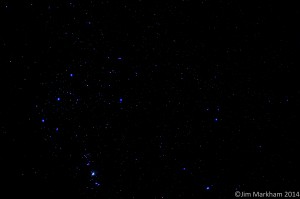
(Canon EF 85mm f/1.8. 10x 15-second exposures shot at f/1.8, ISO 400)
Then out to the long end of my zoom [200mm]:
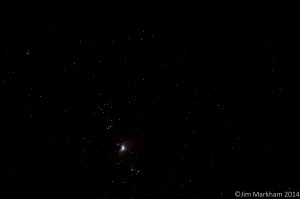
(Canon EF-S 18-200mm f/3.5-5.6. 10x 25-sec exposures shot at 200mm, f/5.6, ISO 800)
Then the monster I shot through the scope on the first night:
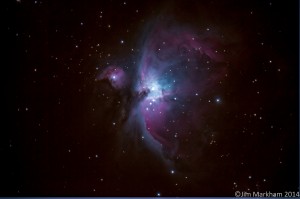
(10x 20-sec + 10x 13- sec (6:30 total exposure), Celestron NexStar 8 GPS w/ f/6.3 reducer, Canon T1i @ISO 800. 13s and 20s exposures stacked separately in DSS, then layered in Photoshop)
After waiting over an hour after Jupiter cleared the horizon so it was finally visible over the tops of the trees off to the NE of where I was set up, I was rewarded with a pretty cool view. 3 of the 4 major moons are currently visible, and showed up as pinpricks of light all lying nearly on the same line near Jupiter. The location was less than optimal for viewing, having risen over the only thing open late (a gas station, which was throwing off lots of nasty thermals), but nonetheless, the experience was particularly mind-blowing. I was looking through my scope at another planet, 365 million miles away, and I could see FEATURES! The great red spot wasn’t on our side of the planet when I was viewing, but I could see the northern and southern cloud belts, and all of the currently visible moons! I took a 3000-frame video, and had Registax throw the best 50% of the images together to see what I could come up with. Not bad for my first time doing planetary imaging:
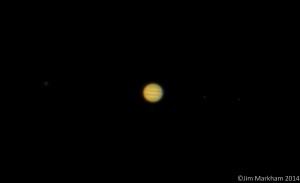
Edit: Finally got shots of the setup snagged off Mike’s facebook feed:
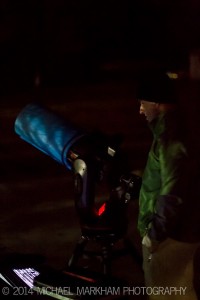
Added the homebrew dew shield since the last time I was out with the scope for an extended period (the lunar eclipse back in Oct), the objective lens kept getting fogged. I’ll eventually refine this one so it fits exactly, but cutting it a bit large and then wrapping a pair of bungee ties around the end of the optical tube assembly worked fine.

Leave a Reply